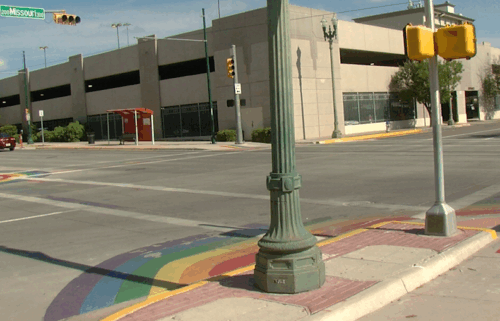‘We had to literally unpolish them’: ‘Pistol’ makeup artist on achieving the punk look
Leah Dolan, CNN
As explored in the new Sex Pistols miniseries “Pistol,” directed by Danny Boyle, the punk subculture flipped the script on fashion, music and especially beauty.
Instead of being used as tools for physical improvement, hair and makeup were suddenly severed from their typical mission: Appealing to a potential mate. In fact, they often became tools to dismantle sex appeal.
If the 1970s said hair should hang long and sit smooth, the punk aesthetic demanded gravity-defying spikes and teased, knotty textures. If mainstream makeup — pioneered by the likes of Farrah Fawcett, Jerry Hall, Jane Birkin and Donna Summer — dictated fresh, delicate skin, long lashes and lip gloss, punks buried their eyes under heavy rings of liquid eyeliner, painted their mouths with black lipstick and wrote phrases like “No future” on their foreheads.
Cheekbones and nose bridges were no longer a mandatory roadmap for bronzer or blush. Instead, to punks, they were a craggy terrain that only made the haphazard painting of rebellious phrases or abstract shapes all the more interesting.
Although it was firmly rejected in its traditional form, beauty was still a pillar of the movement. This made the job of “Pistol” makeup artist Ivana Primorac all the more challenging.
Not a hair out of place
Set in London during the 1970s, the Disney+ series, out May 31, is based on the autobiography, “Lonely Boy: Tales from a Sex Pistol,” by guitarist Steve Jones. British director Boyle, whose filmography includes “Trainspotting” (1996), “The Beach” (2000) and “Slumdog Millionaire” (2008), prioritized authenticity — going so far as to embed archival footage of the band in the show. There couldn’t be a hair out of place — literally. “We had to be exact,” said Primorac in a video call ahead of the series release. “There are a lot of cuts where we go from the real thing into a cut with our footage.”
Primorac banded together with the fashion department, which had been given access to original Vivienne Westwood pieces from the period, to create “a bible of every Sex Pistols concert.” The book was an exhaustive catalog of each public appearance made by the band, providing invaluable information on which outfits were worn, how they were accessorized and, of course, what color their hair was.
Matching colors, hair length and proportion of spikes and styles proved to be the most difficult, Primorac said.
“Proportion is the hardest thing because you have to figure out what that [hair style] looks like on someone else,” she said. “So many characters, like Sid Vicious, are incredibly well documented; on television, in print, everywhere. And it wasn’t that long ago, people will remember. So it was hard.”
The need for cosmetic precision plus Boyle’s unorthodox directing method — which saw the cast regularly perform two-hour long gigs as the Pistols at London’s historic 100 Club — meant cracking the look was a lengthy process for Primorac. “We recreated all the gigs there,” she said. “And so you can’t go in between takes and necessarily [alter] things because, you know, Danny wants to film it. So afterwards we’d go into a recording studio and watch the performance. That’s when you can really see the proportion and how it all looks and where to make changes.”
Acne as anarchy
The series stars a roster of young British talent; including Maisie Williams, Louis Partridge, Thomas Brodie-Sangster and Iris Law (who makes her acting debut). But their celebrity glow was more a hindrance than a help to Primorac. “We literally had to unpolish them,” she said. “There were a lot of fake teeth, the hair was greasy, the skin was greasy and full of spots — we had to make prosthetic spots.”
Primorac asked Julien Temple, the filmmaker who kickstarted his career with a documentary chronicling the rise of the Sex Pistols in the mid-1970s, why the punk precedent was generally looking less hygenic. “He said it was the fact that people didn’t have access to what we have today. We don’t really think of that anymore … (back then) people had soap and water and that was it. If you went out to a bar and you didn’t come home for two days, you didn’t really stop and have a shower somewhere,” she recalled. “And also people’s bad diets, lots of drinking and drugs and all sorts of things.”
In addition to replicating the iconic hairstyles and face paint, Primorac also had to capture the movement’s heavy-going lifestyle and its effects on the body. “And at the end of the day, (the cast) would take that punk look off and clean with very expensive, lovely cosmetics and go home and look like normal 21st-century actors.”
Painting a legend
One character’s makeup in particular stood out from the rest. The late Pamela Rooke, a punk fashion luminary and original employee at Westwood’s lauded clothing boutique “Sex,” was brought to life on-screen by “Game of Thrones” actor Williams. From her cubist, Piet Mondrian-inspired face paint (now one of the most recognized images of the 1970s London punk scene) to her sweeping, exaggerated black eyeliner, Rooke’s fearless approach to beauty helped land her the title of the Queen of Punk.
Before her death in April this year, Rooke was a constant presence on set, Primorac said. “What was amazing was, when Maisie was filming, (Rooke) saw her and was almost in tears because she suddenly saw herself and her past,” she said. “The (Sex) shop was recreated, the street looked exactly the same, and there (was Williams) standing completely in the same clothes. It was quite a touching moment.”
Rooke was liberal with feedback on how to perfect her look. “She was very, very, very involved,” Primorac said. “We went through the whole routine and why the black eyeliner had to be wider at the sides and narrower at the front. She literally talked us through how she came and arrived at that look, what she used and why she used it.”
The Queen of Punk was also on hand to steer the team away from any factual inaccuracies — something rarely offered to artists involved in biopics. “There was one very iconic picture of her with red eyeliner on which we wanted to recreate, but (Rooke) said ‘No, I never wore that.'” According to Primorac, Rooke remembered that day vividly — she had gone to work at Westwood’s Kings Road boutique after being out all night and forgot her makeup. “Then Malcolm McLaren (Westwood’s former partner) told Rooke, ‘get yourself ready because there’s going to be a photographer.’ So she just picked up a lipstick and did something in red. She only did it once, yet I thought it was one of her looks. So we didn’t include it in the film.”
Now that the fashion world has revived fetish gear, perhaps a new version of the punk beauty aesthetic will soon follow. Those keen to recreate the lethal-looking spikes of Johnny Rotten or the enormous beehives of Rooke at home will be pleased to find the glue that held together the punk production was surprisingly accessible. “L’Oreal Elnett hairspray,” Primorac said. “There was a lot of Elnett hairspray.”
Top image: Maisie Williams as Pamela Rooke in Danny Boyle’s “Pistol” out May 31 on Disney+.
The-CNN-Wire
™ & © 2022 Cable News Network, Inc., a WarnerMedia Company. All rights reserved.




